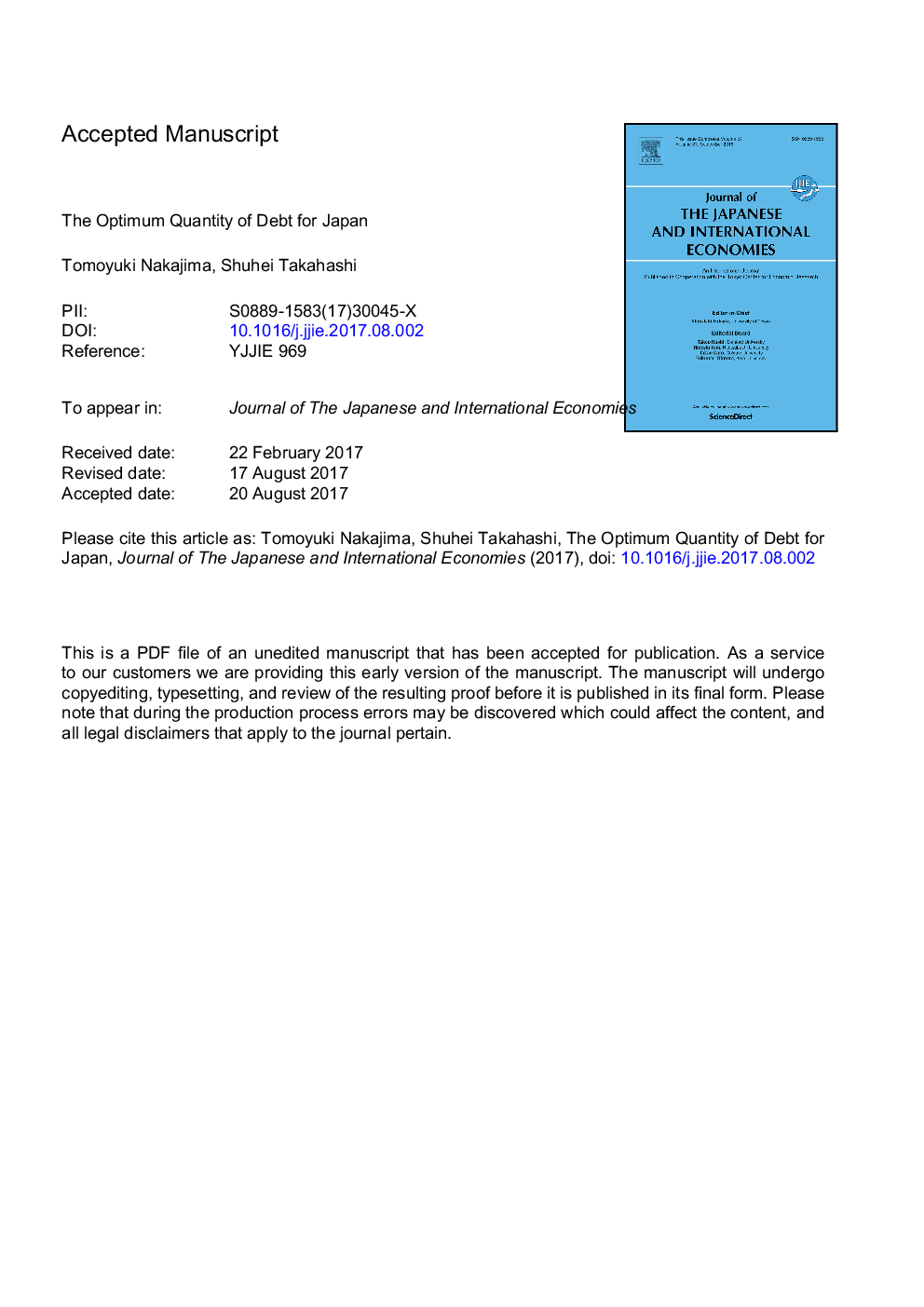| Article ID | Journal | Published Year | Pages | File Type |
|---|---|---|---|---|
| 5101224 | Journal of the Japanese and International Economies | 2017 | 31 Pages |
Abstract
Japan's net government debt is 130% of GDP in 2013. The present paper analyzes the effect of the large government debt on welfare. We use a heterogeneous agent, incomplete markets model with idiosyncratic wage risk, a borrowing constraint, and endogenous labor supply. We calibrate the model to the Japanese economy using evidence based on macro-level and micro-level data. We find that the optimal level of government debt is -50% of GDP for Japan. The welfare cost of keeping government debt to 130% of GDP rather than the optimal level is 0.19% of consumption.
Related Topics
Social Sciences and Humanities
Economics, Econometrics and Finance
Economics and Econometrics
Authors
Tomoyuki Nakajima, Shuhei Takahashi,
